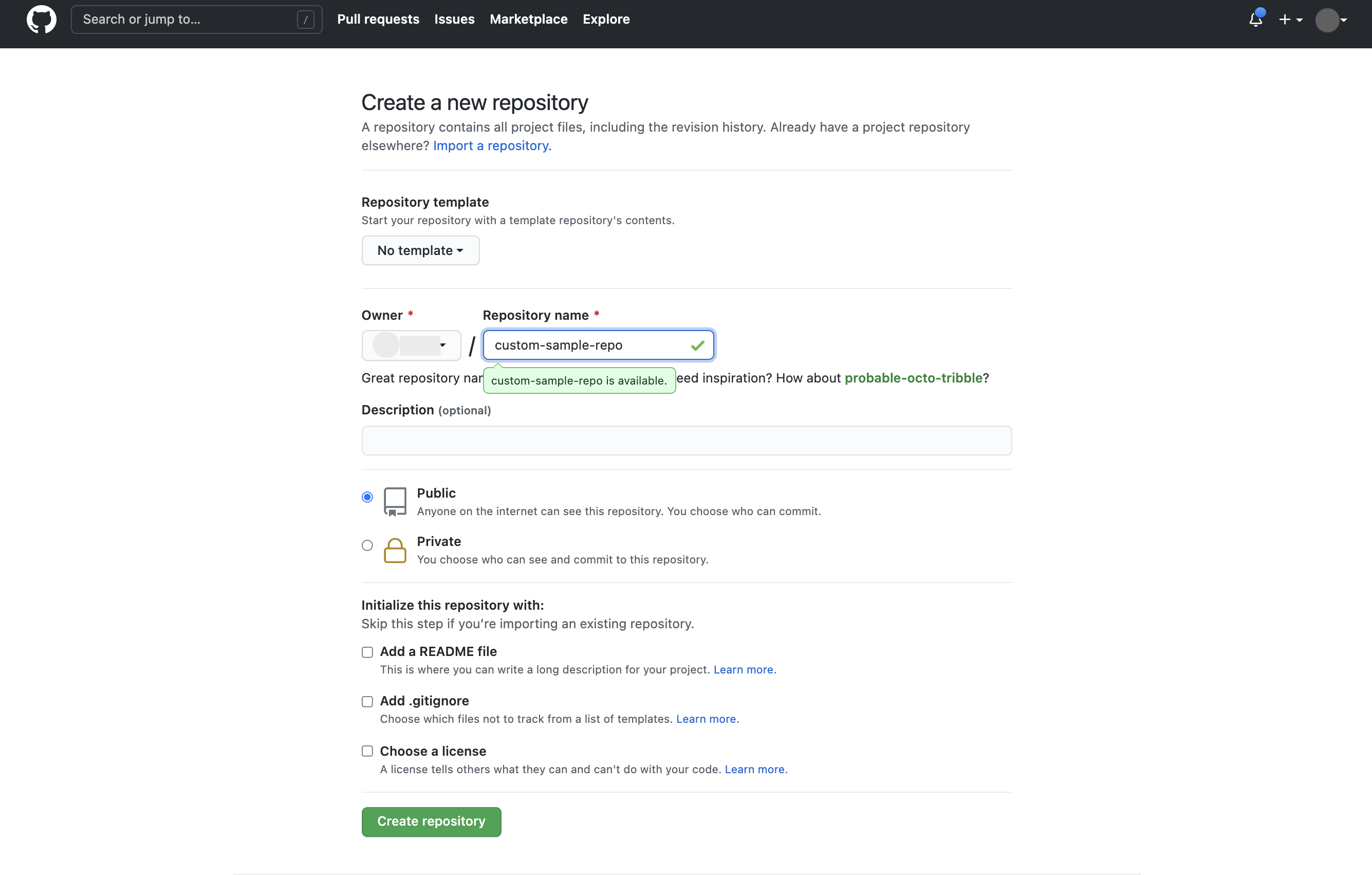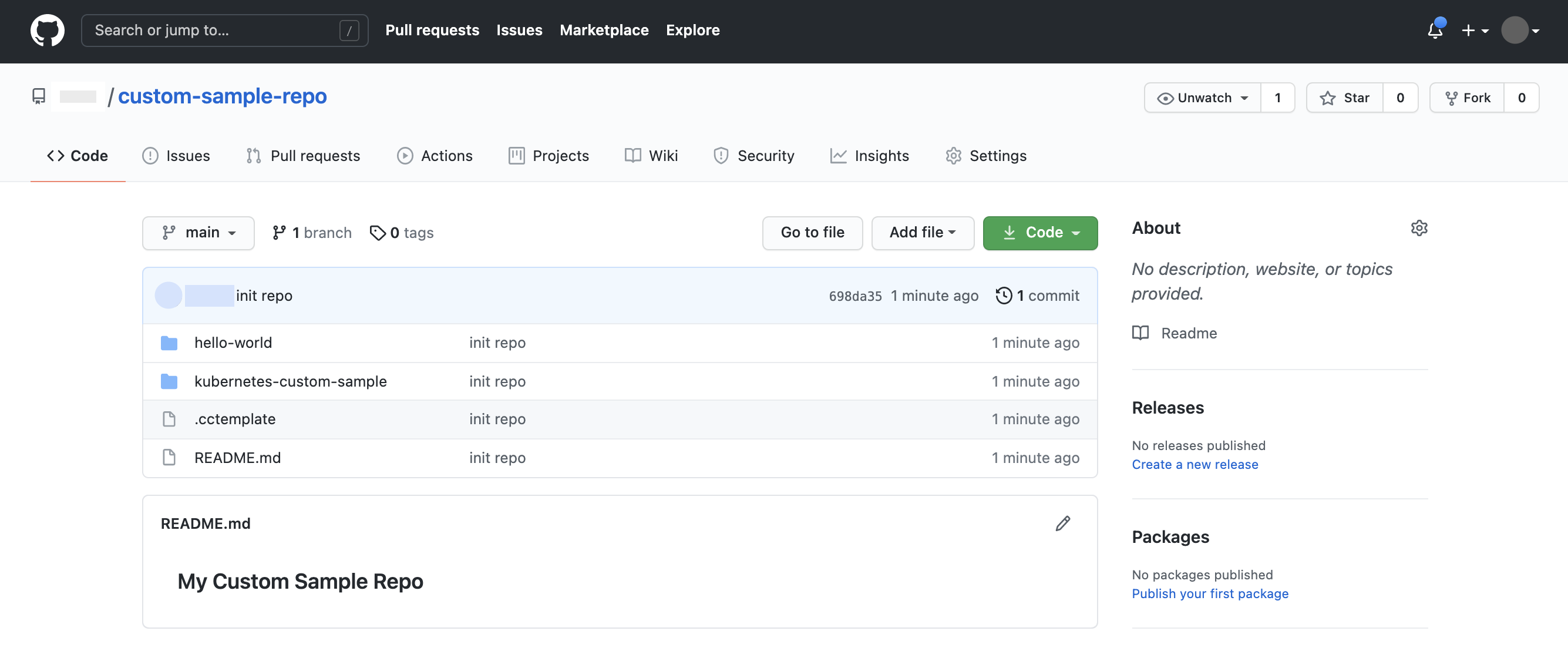Um repositório de amostra é um repositório Git que contém amostras personalizadas criadas para o desenvolvimento de aplicativos.
Isso significa que, em uma organização ou equipe, é possível configurar repositórios de amostra com o Cloud Code, personalizado para sua organização, para oferecer um conjunto padrão de aplicativos, serviços e configurações de infraestrutura iniciais que outras pessoas pode usar. Isso ajuda a alinhar novos projetos à pilha técnica e aos padrões preferidos da sua organização, além de incentivar a incorporação de práticas recomendadas no início do ciclo de desenvolvimento.
Um repositório de amostra pode ser um repositório de aplicativos de amostra que você já criou ou um novo conjunto de amostras que você gostaria que outras pessoas usassem. Para importar um repositório com o Cloud Code, adicione um arquivo de descritor de amostra ao repositório.
Quando eles estiverem prontos, os repositórios de amostra serão fáceis de compartilhar com sua equipe. o usuário precisará configurar o Cloud Code e o URL do Git do repositório de amostra que será usado. Para repositórios Git particulares, somente membros que tenham acesso ao repositório podem usar as amostras personalizadas subjacentes.
Para ver um exemplo de como um repositório de amostra pode ser configurado, consulte este repositório (em inglês).
Como criar um repositório de amostra
Para usar um repositório existente, pule para a criação de um arquivo de amostra do descritor. Para criar um novo repositório de amostra, siga estas etapas:
Crie um novo repositório Git.
O repositório Git pode ser hospedado remotamente ou ativo na máquina local. Neste exemplo, é usado um novo repositório do GitHub, "custom-sample-repo".

Adicione diretórios de amostra ao repositório.
Os diretórios de exemplo podem conter qualquer coisa e podem estar localizados em qualquer lugar no repositório. Neste exemplo, dois diretórios de amostra, "hello-world" e "kubernetes-custom-sample", foram adicionados a "custom-sample-repo".
É altamente recomendável usar um arquivo readme com instruções sobre como usar melhor as amostras personalizadas.
Crie um arquivo de descritor de amostra.
Um arquivo de descritor de amostra fornece ao Cloud Code informações sobre sua amostra para criar o aplicativo corretamente. Esse arquivo precisa ter o nome
.cctemplate, estar localizado no diretório raiz e ter o esquema definido na seção Esquema de arquivo de descritor de amostra.Teste o modelo personalizado seguindo as etapas para criar um app usando um modelo personalizado.
Exemplo de esquema de descritor
| Key | Descrição | Tipo |
| metadados | Metadados usados pelo Cloud Code para ler. Compatível com o esquema de metadados. | Metadados |
| Modelos | Matriz de amostras contidas em um repositório. Os objetos nessa matriz precisam estar em conformidade com o Esquema de exemplo. | Matriz<Sample> |
| nome (optional) | Nome do repositório de amostra. | String |
Exemplo
{
"metadata":{
"version":"1"
},
"name": "My Sample Repository",
"templates":[
{
"path":"/path/to/sample1_location",
"name":"My Sample 1",
"description":"The first sample of its name."
},
{
"path":"/path/to/sample2_location",
"name":"My Sample 2",
"description":"The sequel."
}
]
}
Esquema de amostra
| Chave | Descrição | Tipo |
| caminho | O local da amostra em um repositório. O caminho é relativo à raiz do repositório. |
String |
| nome | Nome de uma amostra. O nome é exibido em um ambiente de desenvolvimento integrado ao selecionar uma amostra para a base de um aplicativo. |
String |
| descrição (opcional) | Descrição de uma amostra. A descrição é exibida em um ambiente de desenvolvimento integrado ao selecionar uma amostra para a base de um aplicativo. |
String |
Exemplo
{
"path":"path/to/sample1",
"name":"My Sample 1",
"description":"The first sample of its name."
}
Esquema de metadados
| Chave | Descrição | Tipo |
| version | A versão do esquema de amostra a ser usada. A única versão válida é
1.
|
String |
Exemplo
{
"version":"1"
}
Como excluir um repositório de amostra personalizado
Para excluir uma amostra personalizada, que a remove do fluxo de seletor de aplicativos personalizado e das máquinas dos usuários:
No arquivo
settings.json, procure alocalPathpara a entrada de amostra personalizada."cloudcode.customApplications": [ { "repoUrl": https://github.com/GoogleCloudPlatform/cloud-code-custom-samples-example.git, "branchName": "", "localPath": "/Users/username/Library/cloud-code/custom-templates/https-github-com-google-cloud-platform-cloud-code-custom-samples-example-git" } ],Exclua a pasta de modelo no caminho.
Exclua a seção de amostra personalizada do arquivo
settings.json.


